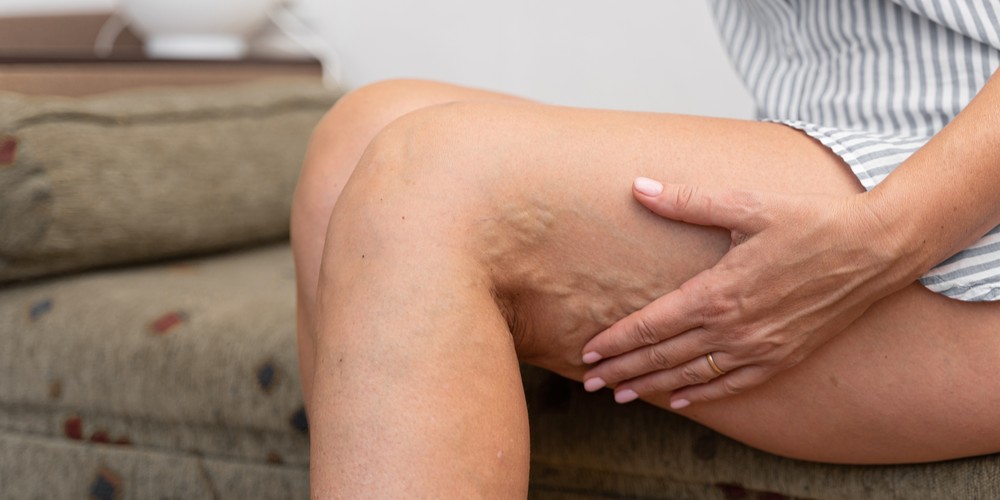
Varicose Vein Treatments Austin Texas
The varicose vein treatments available at our Austin vein centers are the most modern therapies available. Varicose veins are swollen, dark blue or purple blood vessels that you can obviously see and feel beneath the skin. They often look like twisted cords, and usually appear on the calves, inside of the legs, and ankles. As varicose veins continue to weaken under the constant strain, they often continue to get bigger and balloon outward. This tends to raise the skin surface and causing the skin to bulge and thin out or get discolored. Many of our patients in Austin suffer from varicose veins of the legs, with over 25 million Americans being afflicted by the condition. Worldwide, up to 40% of women and 25% of men develop varicose veins during their lifetime. Varicose vein treatments are one of the most common leg therapies performed in the United States and worldwide.
When to Consider Varicose Vein Treatments
If varicose veins are leading to any symptoms, one should consider medical evaluation. Patients report a wide variety of symptoms including burning or aching pain, throbbing, itching, and pressure sensations. Leg or ankle swelling is also a prominent complaint in those with varicose vein disease. Both discomfort and swelling can be signs of significant underlying circulation issues such as venous reflux, which requires additional testing for diagnosis.
Long-standing varicose vein disease can lead to many different problems, some more serious than others. This includes chronic wounds or ulcers in the feet and ankles (e.g. venous stasis ulcers), chronic leg or foot swelling or edema, discoloration or darkening pigment changes in the skin, thinning of the skin, or other severe skin disorders including stasis dermatitis, recurrent thrombophlebitis, and increased risk of skin infections such as cellulitis. The longer that the varicose vein disease is present, the higher the likelihood of developing these medical problems.
Pain or discomfort symptoms in the legs can also be signs of more serious underlying medical conditions in the veins. Both phlebitis/thrombophlebitis, as well as deep venous thrombosis, can lead to pain or swelling in the veins of the leg. These conditions are best diagnosed by a physical exam and vein ultrasound.
Treatment & Removal of Varicose Veins
There are many reasons people seek treatment for varicose vein removal, including frequent discomfort, chronic swelling/edema, or skin damage. Many people with the venous disease also seek cosmetic treatment to eliminate or reduce the appearance of unsightly varicose or spider veins on the legs. Sometimes patients seek out treatment for varicose vein removal to reduce their chances of developing more significant circulation problems down the road if their veins are left untreated.
There are several treatment options available to eliminate or reduce the appearance of varicose veins and relieve any symptoms. These therapies may include self-care methods such as losing weight, keeping the legs elevated, using over-the-counter anti-inflammatory medications, regular exercise, and wearing compression stockings.
More immediate and permanent relief of varicose veins is often achieved through interventional therapies. With advancements in technology, vein treatments can be administered with minimal discomfort and very fast recovery. Some of the more common and effective therapies include the use of thermal energy, chemical closure with medication injections, or micro-surgery.
- Sclerotherapy treats varicose veins by injecting a solution into the targeted veins that causes them to gradually disappear. The sclerosant solution used during the procedure irritates the vein lining and turns it into scar tissue that eventually absorbs as the veins fade away. Depending on the extent of your disease, it may require several treatment sessions to achieve the desired result. Some FDA-approved sclerotherapy drugs for varicose vein removal include Polidocanol and Sotradecol.
- Endovenous Varithena Ablation is an FDA-approved and patented medication that is designed exclusively for treating unsightly or painful varicose veins of the legs. It is particularly useful in the treatment of serpentine or tortuous leg veins. This medication is a microfoam that causes a chemical reaction in the vein wall at the site of injection that causes the vein to scar and close. The vein then gradually gets absorbed by the body.
- Radiofrequency Ablation of varicose veins (also known as VNUS ClosureFast Procedure or Venefit Procedure) involves placing a small catheter within the defective vein which delivers radiofrequency heat energy to the vein wall, causing it to seal shut instantly. It is typically performed in the office under local anesthesia and requires minimal recovery time.
- Endovenous Laser Therapy (EVLT) of varicose veins is a minimally invasive laser procedure that treats varicose veins faster, safer, and more effective than surgical procedures, as it precisely targets the affected veins with a laser probe under ultrasound guidance. The laser heat energy delivered to the vein causes the vein walls to scar shut so that blood can no longer flow through them. Following laser vein therapy, the venous blood flow that once circulated through the varicose veins is diverted into healthy veins.
- Endovenous VenaSeal Closure of varicose veins involves the injection of the vein with a medical “super glue” that is specifically formulated to close abnormal blood vessels. This therapy is extremely effective and does not require the use of compression stockings following treatment. VenaSeal is considered one of the least painful varicose vein procedures. Following this therapy, you can return to all activities immediately, including regular exercise.
- Clarivein Procedure of varicose vein disease is an office-based catheter procedure that is used to treat leg varicose veins and venous reflux. It uses a modern catheter technology designed by Vascular Insights to deliver vein closure medications directly to the vein wall through a mechanical dispersion process. It requires a single IV site and no incisions.
- Micro-Phlebectomy is a very traditional way of dealing with varicose vein disease. This procedure is also referred to as ambulatory phlebectomy or pin phlebectomy. Although the more modern vein therapies listed above have replaced the need for micro-phlebectomy surgery for many patients, there are some anatomical reasons why phlebectomy is still the best option in certain circumstances. Phlebectomy involves the physical removal of the veins through small punctures in the skin. Although anesthesia is necessary, it can still often be performed in our vein center rather than in a hospital or surgery center.
To determine which varicose vein removal treatment option is best for your particular vein condition, call for a no-obligation MD consultation with our Vein Specialists.
For more information regarding the treatment options listed, please refer to the other pages of our website.
» Click here to view varicose vein before and after photos.
- Sclerotherapy treats varicose veins by injecting a solution into the targeted veins that causes them to gradually disappear. The sclerosing solution used during the procedure irritates the vein lining and turns it into scar tissue that eventually fades away. Depending on the extent of your disease, it may require several treatment sessions to achieve the desired result.
- Radiofrequency Ablation of varicose veins (also known as VNUS Closure Procedure) involves placing a small catheter within the defective vein which delivers radiofrequency energy to the vein wall, causing it to seal shut instantly. It is typically performed in the office under local anesthesia and requires minimal recovery time.
- Endovenous laser therapy (EVLT) of varicose veins is a minimally invasive laser procedure that treats varicose veins faster, safer, and more effective than surgical procedures, as it precisely targets the affected veins with a laser probe under ultrasound guidance. The laser energy delivered to the vein causes the vein walls to scar shut so that blood can no longer flow through them. Following laser vein therapy, the venous blood flow that once circulated through the varicose veins is diverted into healthy veins.
- Ambulatory Phlebectomy is a surgical procedure in which varicose veins are surgically removed through small micro-incisions in the skin. It can be performed under local anesthesia at our vein center or in a local surgery center.
» Click here to view varicose vein before and after photos.


